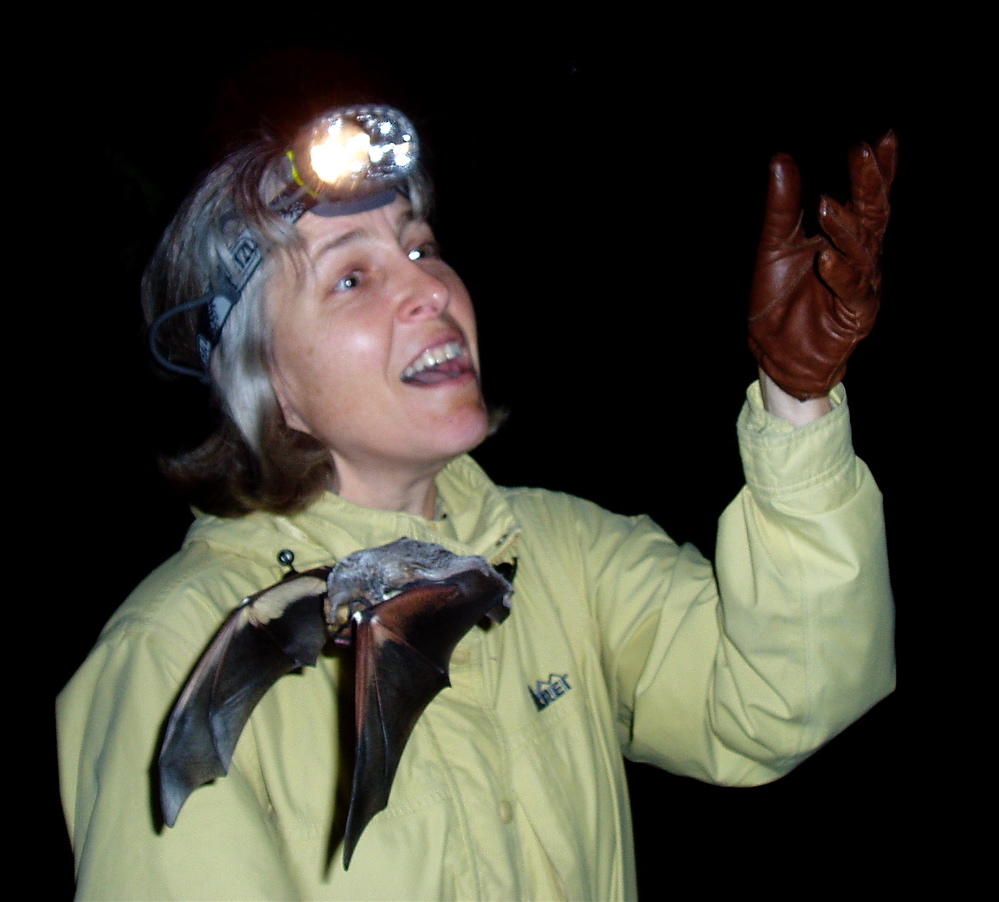Bats of San Francisco: the answers
 After much hard work, I finally managed to complete my master's degree at San Francisco State University this summer. At this point, I know more about the bats that live in San Francisco than anyone else in the world.
After much hard work, I finally managed to complete my master's degree at San Francisco State University this summer. At this point, I know more about the bats that live in San Francisco than anyone else in the world.If you've had the patience to follow along you will know that my study involved an acoustic survey of the bats that live here in the city, to understand what factors affect their foraging for insects. Here's what I learned. There are at least four species of bats in the city. By far (84%) most of them are Brazilian Freetailed bats (Tadarida brasiliensis ). Parks that have water in them also tended to have Yuma Myotis bats (Myotis yumanensis ). The two other bats I found were Western Red bat (Lasiurus blossevillii) and Little Brown bat (Myotis lucifugus). Bats are present and active all year in the city, with the highest activity levels in the fall. I found Freetailed bats in every place I looked, even in back yards. This is probably because they tend to fly high and forage over large distances, and their loud calls are easy to pick up on a recording. Yuma bats are known for hanging out near water, so it wasn't a surprise to find them near lakes and streams. However, they were not at all the lakes: I didn't find them at my recording location in Golden Gate park, at Stowe lake. Red bats migrate through in spring and fall but are known to over-winter in the arboretum in Golden Gate park. Little browns are the bat apparently most affected by white nose syndrome in the eastern US. They are really widespread and common, but I only found them in two locations: Pine Lake and the Fire Department's reservoir at the top of Twin Peaks.
The highest diversity of bat species were at those two locations. This is interesting because these are not large bodies of water, nor are they in large parks. Pine Lake, shown here, is in a medium-sized park with heavy recreational use. I considered five potential factors to explain this: park size, amount of tree edge in each park (where bugs like to hang out), distance to the nearest large park, distance to the nearest fresh water, and amount of native plants in each park. I used statistical modeling to understand what variables best explain the difference in number of species, as well as the difference in activity between the parks. The best explanation for the number of species was the distance to the nearest water.
One interesting thing I didn't find was Big Brown bats (Eptesicus fuscus ). These are very common and widespread, especially in urban areas. I am not sure why I didn't find any in San Francisco, as they've been found in nearby areas.
You can read more about the results of my research in the published article (pdf download). If you have questions about it please send me an email at jennifer at krauel dot com.


7 Comments:
right on jennifer! thanks for posting this so we can all read it. hope your move was easy and pip's loving it. btw, that bernal reign orchid flowered completely and persisted in a beautiful form for weeks. i showed it to everyone possible, always remembering what a treat it was when we found it that morning!
Tonight my wife Laurie called me out at sunset (17:30?) to see the "Birds" flying around off our back balcony, one look and I said "Bats!" they were small like sparrows but the darting twisting motion to their flying ment they were feeding and if it was brighter I would say they were swallows in flight but round bodies and no tails to be seen....
I am voting brown bat.
I live in Sunnyside on Mangels avenue overlooking city collage.
kentkb -- I actually never had big brown bat in any of my sites in the city. My guess is probably Brazilian Freetailed bat, which were by far (84%) the most common bat. Great to hear that you could see them in your back yard!
Hey Batgirl, Did you find a lot of bat houses around San Francisco? Is there any reason why bathouses would not work here if they are within range of fresh water? I just finished my PhD in bee-ology (bee ecology) at the University of Florida and have relocated to the Bay Area. I have a naturalist's broad interests. -Dr. Ros
Hi Dr. Ros, congrats on your PhD! I didn't find a lot of bat houses in the city, but there was at least one with bats in it - attached to the back of a house in the Sunset, not far from Stern Grove. The best place to find info about bat houses is on the BCI web site - http://www.batcon.org/resources/getting-involved/bat-houses.
Jennifer
This comment has been removed by a blog administrator.
I think there’s a population in the Panhandle that zoom around the lights on the Oak side between Central and Masonic. They are really active on warm nights in October
Post a Comment
<< Home